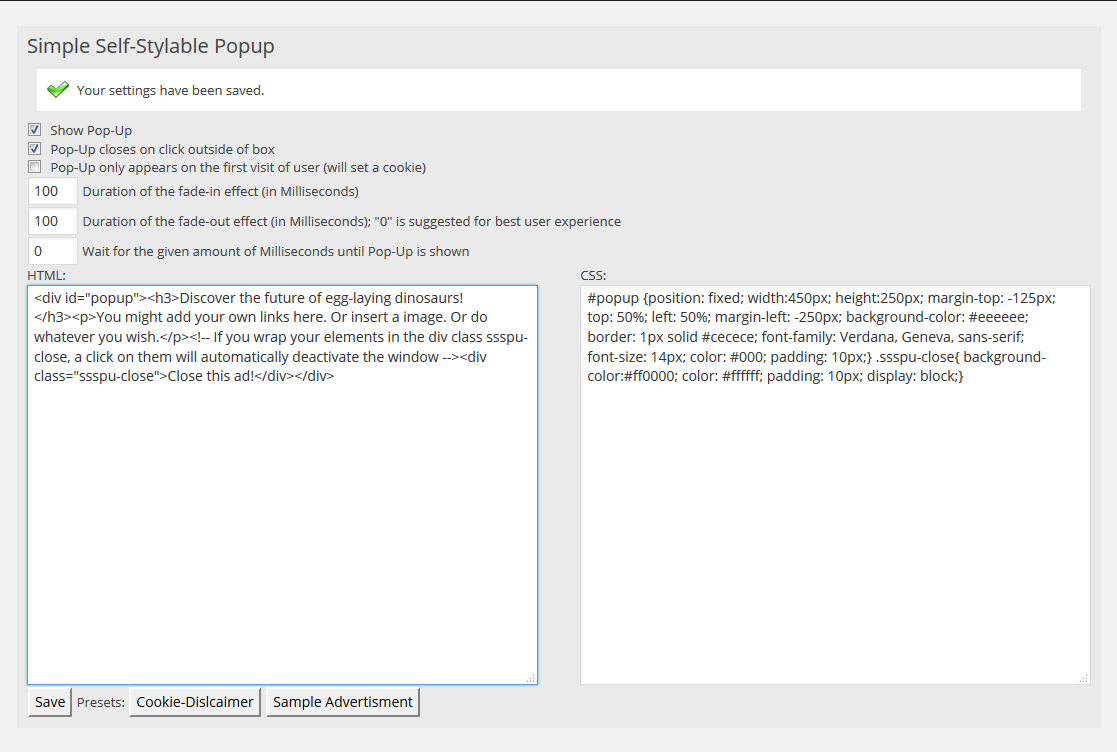Descrizione
This plugin is designed to give it’s user full styling possibilities while offering a easy-to-use framework at the same time. With a limited amount of HTML and CSS knowledge, the Popup can be fully styled and customized by the user.
Screenshot
Installazione
This section describes how to install the plugin and get it working.
- Upload ‘plugin-name.php’ to the ‘/wp-content/plugins/’ directory
- Activate the plugin through the ‘Plugins’ menu in WordPress
- You may access and modify the settings in the WordPress backend via Settings -> sIMPLE Self-Stylable PopUp
FAQ
- How can I create a button that closes the Pop-Up?
-
Simply wrap the text or element into </div>-tags (remove the underscores). You can also style these tags in the CSS-section of the plugin. By default, .ssspu-close does not contain any styles.
- My Pop-Up does not appear
-
Please ensure that your theme calls the wp_footer(); hook. This hook is usually called in a file called “footer.php”.
- The pop-up is displayed as a post / page on the front page of my website
-
This was a bug as of Version 0.5. Please update to the newest version.
Recensioni
Contributi e sviluppo
“Simple Self-Styleable Pop Up” è un software open source. Le persone che hanno contribuito allo sviluppo di questo plugin sono indicate di seguito.
CollaboratoriTraduci “Simple Self-Styleable Pop Up” nella tua lingua.
Ti interessa lo sviluppo?
Esplora il codice segui il repository SVN, segui il log delle modifiche tramite RSS.
Changelog (registro delle modifiche)
0.6
- Plugin is no longer called utilizing “the_content”-hook, but instead uses the “wp_footer”-hook now. This fixes a bug that made the plugin appear as additional post on the home/start-page. In return, the theme running the plugin must use the wp_footer(); call.
0.5
- First stable and tested version.
